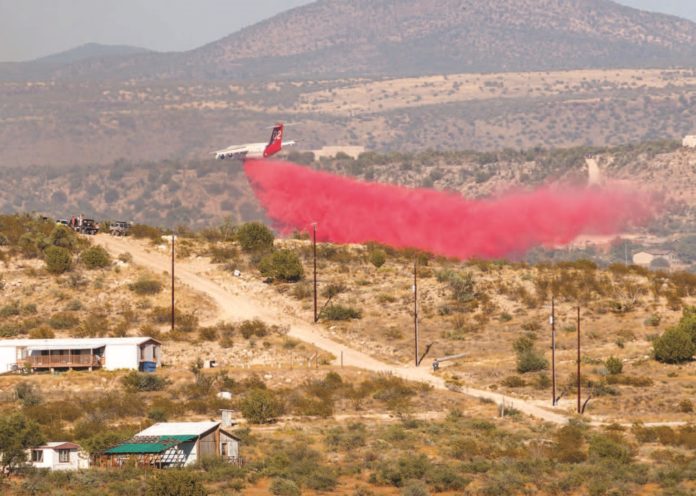It’s that time of year in the Verde Valley: Stage 2 Fire Restrictions are in place and firefighters are on high alert.
Danny Hinds, a captain with the Verde Valley Fire District, says that his team is ready to handle any impending blazes.
“We’re on high brush status, which basically means that everybody’s on high alert and ready to roll out for a wildland urban interface [an area between wilderness and developed land] type of situation,” he said.
Hinds explained that structural firefighters have been cross-trained to handle local “small fire starts before they turn into something big.”
“Last year, we had one of the biggest fires in the Verde Valley that we’ve ever had, which was the one in Cornville,” he said. “We’re usually able to get to them and put them out pretty quickly.”
Hinds said that the decision to enter Stage 2 Restrictions is because of low humidity and high winds, which are typical weather for this time of year.
“That’s why we went to that stage, to try to stop them before they start,” he said. “When you deal with it every year like clockwork, the only question is — is it going to start sooner or later?”
Hinds said this year has been relatively quiet, so far. However, public attention to fire status can often be a determining factor in how fires start.
“A lot of these people are just realizing that we’re at that point,” he said.
Education Results Mixed
Hinds said that when it comes to public education, it’s “like the old expression of leading a horse to water.”
“I would say public education is the biggest thing [when it comes to] stopping [wildfires],” he said. “People have to be susceptible to it though.”
“It’s not just a matter of information being put out there, [People have to be] actively looking for it.”
At this point, 85% of wildfires in the United States are caused by human activity, according to Wildland Fire Management Information and U.S. Forest Service Research Data Archive from 2000 to 2017 published by the National Park Service.
“Human-caused fires result from campfires left unattended, the burning of debris, equipment use and malfunctions, negligently discarded cigarettes and intentional acts of arson,” NPS said.
The cost of suppressing wildfires has increased from $435 million to $1.6 billion in the past 20 years, which means less money goes to public prevention efforts, according to the National Fire Protection Association.
While there is definitely room for improvement, Hinds said that many people are doing a good job of educating themselves and readying their homes for a fire event.
Sometimes, Hinds provides consultations for homeowners who are interested in creating defensible spaces [a buffer between property and surrounding wildland areas].
“There are quite a few people who call me for Firewise consultations,” he said. “I come out and use a spreadsheet that’s been put out by the NFPA and what it does is it gives you a rating on your readiness of your house.”
“So there’s quite a few people that are definitely concerned and are in touch about it.”
Future Outlook
Regarding the future of the Verde Valley and wildfires, Hinds said that there is a focus on improving responses to situations, but essentially, paying attention is key to preventing fires.
“Firefighting tactics don’t change much,” he said. “What we’ve been working on over the last several years is looking over these situations and making sure that our responses are in line with what we need to accomplish.”
Hinds said readiness is the most important thing.
“We have the resources without a doubt, and the sooner we can get out there before [a fire] grows outside of our ability, the better off we are.”
Hinds said that in terms of fuels, he is thankful.
“Thankfully right here, we don’t have a huge amount of the large ever-green [like California and other areas do] that can really torch off.”
However, Hinds said the area does face a number of challenges that are not likely to go away any time soon, such as ongoing drought conditions.
“Firefighters are continuing drought training, and so on and so forth,” he said. “We’re definitely going to have to face some challenges in the future.”
Another challenge is the sheer number of people inhabiting local camping areas.
“With the homeless issue going around, we’ve got a huge number of campers out there and that is definitely a concern,” he said.
Hinds said that citizen patrols [volunteers checking for abandoned campfires] are not currently part of VVFD’s programming, but “it’s not a bad idea to get people out there looking.”
“Especially this time of year, there’s no open burning [allowed under Stage 2 Restrictions], so if you’re driving by and you see an open fire, call it in.”
More information on fire safety and prevention can be found on VVFD’s website.



